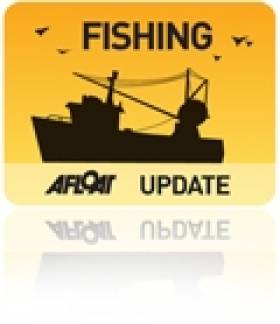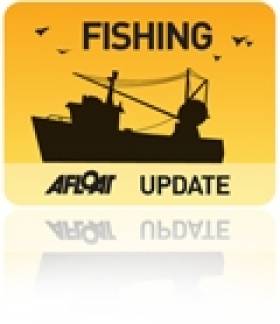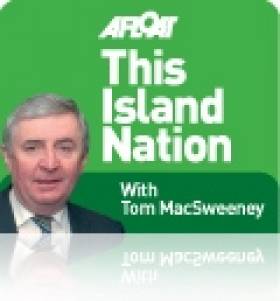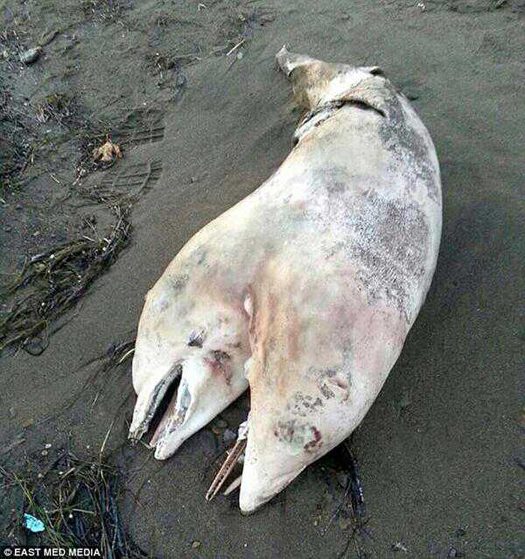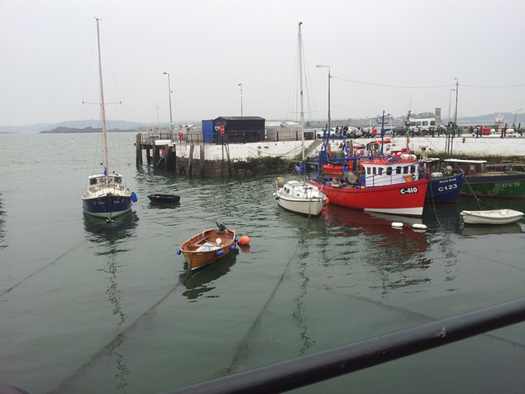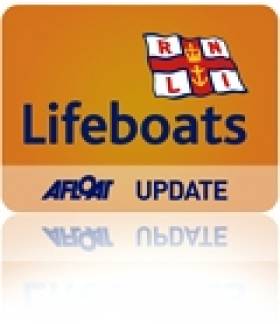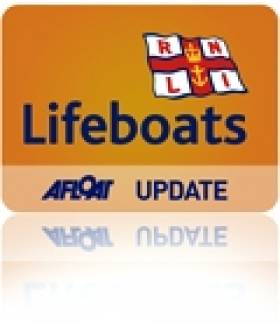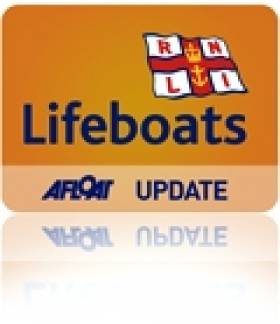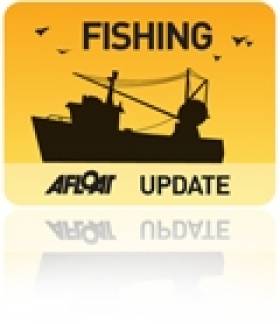Displaying items by tag: Fishing
EU Demands Management of Sea Fisheries in 7,000 Square Miles
#seafisheries – The impact of commercial fishing in more than 11,500 square kilometres (7,000 square miles) of English coastal waters is being reviewed to make sure that habitats and species are not damaged by fishing.
This area for further assessment covers about one-third of the sea within six miles of English beaches where there are 89 separate European maritime sites (EMS) protected under European Union law from damage caused by existing or future fishing.
Rob Clark, chief officer of the Southern Inshore Fisheries and Conservation Authority (SIFCA) said today (October 7) that the revised approach to the management of commercial fishing within these maritime sites would ensure EU rules are fully met and inshore fisheries are sustainable.
"Building on existing management measures will ensure that all existing and potential commercial fishing is subject to an assessment of their impact on the sites," he told the annual conference of the Institute of Fisheries Management (IFM) in Liverpool.
Revised management rules would meet EU directives which called for seabed habitats and species in them to be restored to a "favourable conservation status" and for activities which would "significantly disturb or deteriorate them" to be prohibited.
An existing matrix-type approach showing the effect of fishing gears on conservation objectives is being used to enable regulators to decide if priority management measures should be introduced to protect a site, or whether further assessment was necessary.
Fishing activities have been classified as red, amber, green or blue according to the potential or actual impact of fishing gear on a site.
IFCAs have already introduced byelaws restricting potentially damaging fishing from some 5,680 square kilometres of the most important near shore areas classified as red risks, and the Department for Environment, Food and Rural Affairs (Defra) expects measures to address amber risks to be in place by 2016.
Mr. Clark said there was still a significant amount of work to be done by the 10 IFCAs and their partners covering the whole English coast, to deliver the government's commitments for lower risk fishing activities in these areas.
Amber risks would be at sites where there was doubt whether conservation objectives would be achieved because of its sensitivity to a type of fishing. The effect of that activity would need to be assessed at each site affected and management action taken based on the assessment.
Tangle Nets Pushing Endangered Species Over The Edge Say Environmental Groups
#Fishing - Irish environmental groups have called for a ban on the use of tangle nets among the country's inshore fishing fleet, as The Cork News reports.
Tangle netting results in the "indiscriminate capture" of marine wildlife, according to the coalition of groups including the Irish Wildlife Trust, the Irish Whale and Dolphin Group and Coastwatch Ireland.
Among those species said to be under threat from the fishing technique are Ireland's protected whales, dolphins and seals, as well as endangered fish species such as the angel shark and common skate.
Such species "are facing extinction in Irish waters and tangle nets pose a significant threat that may push them over the edge" says the Irish Wildlife Trust's Pádraig Fogarty.
The Cork News has more on the story HERE.
Writing Fishing Women Out Of Existence, Ignoring Pirates & Limerick Slave Port
#islandnation – Why is it that women have been written out of the history of the Irish fishing industry and that in Ireland we ignore the economic opportunities which can be obtained from associating with pirates?
Those are two of the fascinating questions which arose at the symposium about the Irish Sea held in the National Maritime Museum in Dun Laoghaire on Saturday.
The "History, Culture, Environment" of the Irish Sea and whether it should be considered a place, a sea, or a connecting corridor of social, economic and trade importance between the people on both sides of the sea, would that seem a topic of general or limited interest to you?
It should be and what emerged during the day-long symposium was fascinating.
For example, they liked their smugglers in Rush in North County Dublin, so much that in the 1800s the Revenue could only get one man to remain in the village for any length of time before he was chased out, as the locals preferred the smugglers. But why, Joe Varley of the Institute asked, when presenting research done by Maighread Ní Murchadha about the Irish Revenue Boatmen from 1684-1766, do we Irish not make more of the opportunities which the maritime history about smugglers now makes available?
"I think we are a bit behind in the way we develop that. You go to Devon and Cornwall there is every escapade, whether real or made up, about smugglers. There are Smugglers' Coves, Smugglers' Inns, festivals about smuggling and they all attract people into the areas, so there is a great commercial potential. So why in the various parts of Ireland where there are smugglers' traditions, is that not used?
"They loved their smugglers in Rush. There were seven Revenue Boatmen in Skerries, seven in Portrane, eight or nine down in Malahide, all around the same area, in the 18th and early 19th centuries, which was the golden age of smuggling, but always just one brave soul in Rush and he wasn't very welcome! Indeed the locals weren't very welcoming to the Revenue generally and used them for their own purposes. In some areas those who operated as smugglers even gave them accommodation in their own homes as lodgers, so they would know when the Revenue were out on patrol and they could time their smuggling for when the Revenue were ashore!"

So, just think of all the opportunities around the coast to benefit from historical smuggling – not mind you the current type we have seen in recent years with drugs smuggling!
In the 18th century Rush (pictured below) was regarded as a "Smugglers' nest." One of the most well-known smugglers from there was Luke Ryan, born locally in 1750. He emigrated to France and obtained a commission as a Lieutenant in Dillon's Irish Regiment. After some time he returned to Rush and began operating as a smuggler between Ireland and France.

From 1775 until 1783 France sympathised with the Americans during the War of Independence and the French government commissioned Ryan as the Commander of a privateer, The Black Prince, which for several years plundered English ships around the English coast. In 1782 English forces captured Ryan and he was convicted in the Old Bailey in London on charges of piracy, smuggling and treason and condemned to death. He had a charmed life, however. Ordered to the gallows four times, four times he was reprieved. At the conclusion of the war, the French intervened on his behalf and secured his release. Unfortunately, his nest egg, some £70, 000, a lot of money at the time and which he had amassed from smuggling and privateering, was appropriated by French bankers. He died in a debtors' prison in 1789, where he was detained for a debt of £200.
Another Rush smuggler was Jack Connor, a native of Wexford, who practised his trade from what was known as 'The Smugglers' Cave,' located between Loughshinney and Skerries. Described as a "romantic and swashbuckling character," he was popular in high society and it was believed his cave held rich treasures taken during smuggling, but that it was guarded by a green serpent. The cave has never been properly located!
WOMEN CARRYING MEN ON THEIR BACKS
The women of the Claddagh in Galway were so powerful physically, that they often met their men at the boats when they came back from fishing and carried the men ashore on their backs, as well as setting the prices for the fish, cleaning and selling them.
"They were big, powerful women, the Claddagh women," Jim McLaughlin, a political geographer and social scientist, who has lectured at UCC for over 25 years, described them when he made the point that it was strange, because the fishing industry depended upon them, that women had been written out of its history.
"In old photographs you can see fish piled up on the pier, the women cutting and filleting them, the men in black suits who were the merchants looking on, ready to buy the fish."
But the women were disregarded as lower-class because they were doing the tough, dirty job of filleting the fish, blood and guts around the place and they were considered a bit wild. So is that where the 'fishwife' derogatory term came from?
"Women who worked in a men's world were considered of dubious background and quality and were crossing barriers. They were treated badly and their story should be told, perhaps starting with the photographs from around the fishing ports, but there is a huge job of research work and I don't see too many people rushing to do it, but women have been badly treated in the history of the fishing industry."
Professor John Brannigan of UCD's School of English, Drama and Film, one of the organisers of the symposium said he was surprised that, as Ireland had such a wonderful maritime heritage, we have no developed sense of studying that history. Maritime history is not an academic subject, whereas in the UK there are well-developed centres of maritime heritage.
"I am curious why that is the situation when people like to live by the sea, there is a clear value commercially from the sea, which is all very important to an island community which we are in Ireland, so there is a vast amount of research work to be done."
On the way back into Dublin on the DART from Dun Laoghaire I could see occasionally the Dublin Bay sailing fleet on the water for Saturday racing. But quite regularly it was cut off from vision by the high walls around the track and at stations. Unfortunate for a railway running alongside the Irish Sea.
TWO-HEADED DOLPHIN
Scientists have not been able to come up with a reason for a dead two-headed dolphin that washed ashore in in Izmir in Turkey, only the fifth known case of conjoined twins in dolphins. The rate of conjoined twins in marine mammals is less than one percent.
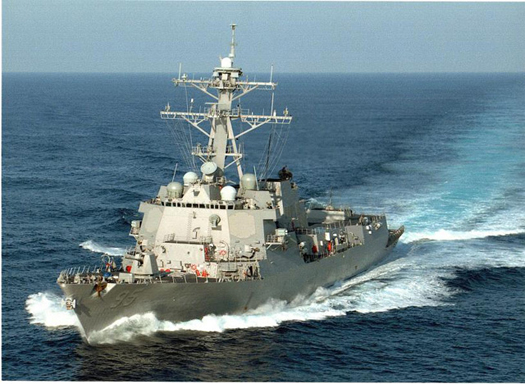
US NAVY SACKS MISSILE DESTROYER OFFICERS
The US Navy is continuing investigations into the situation that emerged aboard its missile destroyer, the USS James E. Williams, part of the 6th Fleet operating with the US Africa Command. The ship's Commanding Officer, Executive Officer and Command Master Chief, effectively the entire command leadership, were fired from their posts in a rare move, while the vessel was at sea, as a result of what has been described as "an on-going climate investigation." The ship departed her homeport of Norfolk on May 30 for an eight-month deployment.
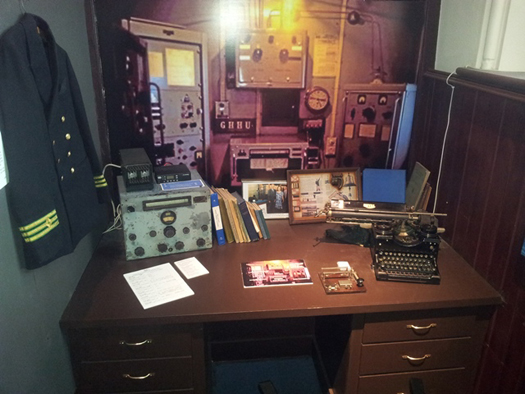
FIRST FOR IRELAND BY RADIO OFFICERS
Since its foundation in 1994, the Radio Officers' Association, for the former 'Sparks' of the sea waves, has grown to 400 members worldwide. For the first time, Ireland has been selected for a re-union of its members. This will take place in Dun Laoghaire on the weekend of November 21/22.
WHAT DO 'YACHTIES' WANT?
Fáilte Ireland is examining the coastal infrastructure in Ireland to find out what the expectations of sailors are. The tourist industry organisation has begun a market research initiative on consumer preferences for sailing, focusing on the infrastructure, facilities and services required to make Ireland a more attractive destination for sailing amongst domestic and overseas sailing enthusiasts.
LIMERICK A SLAVE PORT
While Ireland was never known to have been involved in slaving or having slave ships, research shows that in 1784 Limerick was the first Irish port to attempt to develop a slave-trade company. And in July 1718 a Limerick ship transported 96 slaves from Africa to Barbados, while two Dublin-based ships, the Sylva and the Sophia, were recorded slaving in the Gambia in May 1716. Africans being transported to Jamaica on the Sophia revolted, killing all of the crew except the Captain, according to historical reports.
So, a lot of maritime history this week.... Until next week, the usual wish of .....
"fair sailing..."
Email: [email protected]
Twitter: @AfloatMagazine @Tom MacSweeney
Coveney Calls For Emergency Fund To Help Sanction-Hit Mackerel Fishermen
#Fishing - Marine Minister Simon Coveney wants an emergency fund to assist Irish mackerel fishermen who have been hit by Russia's ban on EU imports in the wake of the Ukraine crisis.
As RTÉ News reports, Minister Coveney made the call at an emergency meeting of Europe's farming and fisheries ministers in Brussels yesterday (Friday 5 September), arguing that support provided to farmers should extend to the fishing sector.
Russia accounts for 25% of all mackerel exports from Ireland, and the minister added that Russia's EU seafood ban "means this is a big fisheries issue as well as an agri-food issue."
A €200 million fund has already been put in place to cover storage of goods that would have otherwise gone to Russia, and to redirect exports to new markets.
RTÉ News has more on the story HERE.
Courtmacsherry Completes 31–Mile Tow of Broken Down Fishing Vessel
#rnli – The Courtmacsherry RNLI Lifeboat completed its tow of the 33 ft–Fishing Vessel 'Michelle' back to the pier in Courtmacsherry after earlier today going to its rescue 31 miles offshore near the Kinsale Head Gas Fields.
The four hour tow was conducted in good conditions and both the two crewmembers and stricken boat are now docked at village pier.
On board the Courtmscsherry RNLI Lifeboat on today's Callout were Coxswain Sean O Farrell , Mechanic Stewart Russell and crew Ciaran Hurley, Ken Cashman, Gary Barrett, Kieran Boyle and Orla Cronin.
Arklow Lifeboat Tows Local Fishing Vessel To Safety
#RNLI - Arklow RNLI’s volunteers were alerted by pager at 9.22am yesterday morning (Wednesday 20 August) and launched the lifeboat Ger Tigchleaar within minutes to a call for help from a local fishing vessel with engine problems.
In a moderate sea, the lifeboat crew – coxswain Ned Dillon, mechanic Michael Fitzgerald, Roger Tyrell, John Bermingham, Andy O'Loughlin and Jimmy Myler – proceeded to scene.
After locating the casualty vessel 11 miles south southeast of Courtown, the RNLI crew established a tow line and proceeded with the long slow tow back to Arklow, arriving at 11.30am.
The two crewmembers aboard the casualty vessel remained aboard during the tow home and all hands came ashore safely at Arklow.
Speaking following the incident, volunteer lifeboat press officer and sea safety officer Mark Corcoran said: “All persons who take to the water, whether for a living or for pleasure, must always wear their lifejackets and should always have a means of raising the alarm.
"Even with the years of experience these professional fishermen have, mechanical problems can still occur. Please don’t take chances when going to sea.”
Arklow Marine Services Launch Vessel for Scottish Client
#ArklowMarine – Arklow Marine Services have completed Sally Ann, a newbuild which has been delivered to her owners Scottish Sea Farms.
Sally Ann is powered by twin Doosan V158TIH main engines and designed by consultant naval architects AG Salmon as a multi-role vessel. She is to be used on the west coast of Scotland where Scottish Sea Farms have all their sites.
The vessel is 22.8m in length with an 8m beam and a lightship displacement of 120 tonnes. She has a service speed of 9 knots with a maximum speed of 10.5 knots. For more details, the Maritime Journal has a report here.
Howth Lifeboat Tows Fishing Trawler To Safety
#RNLI - Howth RNLI's all-weather lifeboat launched at 1.20pm yesterday afternoon (10 August) to reports of a fishing trawler with a fouled propeller drifting north-east of Lambay Island.
Skerries RNLI's volunteer crew also launched their Atlantic 85 lifeboat Louis Simson, but were stood down when it became clear that Howth's Trent-class lifeboat was more apt for the job.
The Howth lifeboat crew located the casualty vessel at 2pm some 12 miles north-east of Howth and established a tow line within 10 minutes of arrival.
The fishing vessel was then safely towed back to Howth Harbour, though progress was slow as a result of deteriorating weather conditions – with a north-west Force 6 wind and a rough sea state – and the return journey took just over two hours.
Howth RNLI coxswain Fred Connolly said after the callout: "We were pleased to locate and assist the fishing trawler so quickly after receiving the call to launch.
"The fishing vessel crew acted very professionally in calling for assistance immediately and they also supplied a accurate position of their location which allowed us to find and assist them so quickly."
Gerry Canning, volunteer lifeboat press officer for Skerries RNLI, added: "The RNLI has a wide range of boats in the fleet to cater for all types of emergencies in all conditions. In this case the Trent all-weather lifeboat from Howth was definitely the right boat for the rescue."
State Of Irish Sea Salmon 'Rather Poor' Despite Industry Efforts
#Fishing - Salmon and cod numbers in the Irish Sea have continued to decline despite strict fishing and angling controls, according to BBC News.
The "rather poor" forecast for the important fish species comes from data collected by the Agri-Food and Biosciences Institute (AFBI) via its research vessel The Corystes, which sails the Irish Sea over 200 days a year and sets the standard for EU fishing quotas.
The AFBI's Walter Crozier said stocks had not "bounced back in the way that scientists expected. So we're now looking at other explanations because there isn't much more the fishing industry can do to reduce their catch of cod in the Irish Sea."
Such factors may include climate change causing a rise in sea temperatures, and increasing diversity of the marine ecosystem.
BBC News has much more on the story HERE.
Skerries Lifeboat Searches For 'Missing' Fisherman
#RNLI - Volunteers with Skerries RNLI launched their Atlantic 85 lifeboat Louis Simson shortly after 8.30pm on Tuesday evening (5 August) after a member of the public called Dublin Coast Guard regarding a man seen launching a small motor boat to go fishing that afternoon who had yet to return.
The lifeboat, with David Knight at the helm and crewed by Joe May, Eoin Grimes and Stephen Crowley, began an immediate search of the most popular local fishing spots, while other volunteer crew in the boathouse began to chart a potential search pattern.
A small motorboat matching the description given, with one man on board, was located just off the western shore of Church Island, off Skerries. The man required no assistance and indicated he was preparing to head for the North Co Dublin coastal town.
As the light was fading the lifeboat offered to stand by while he made his way safely to shore. At the time of the launch there was a Force 2 to 3 southerly wind and a calm sea.
Speaking after the callout, volunteer helm David Knight said: "Thankfully in this case the man was fine. However, the member of the public had genuine concerns and did the right thing in calling the coastguard."



























